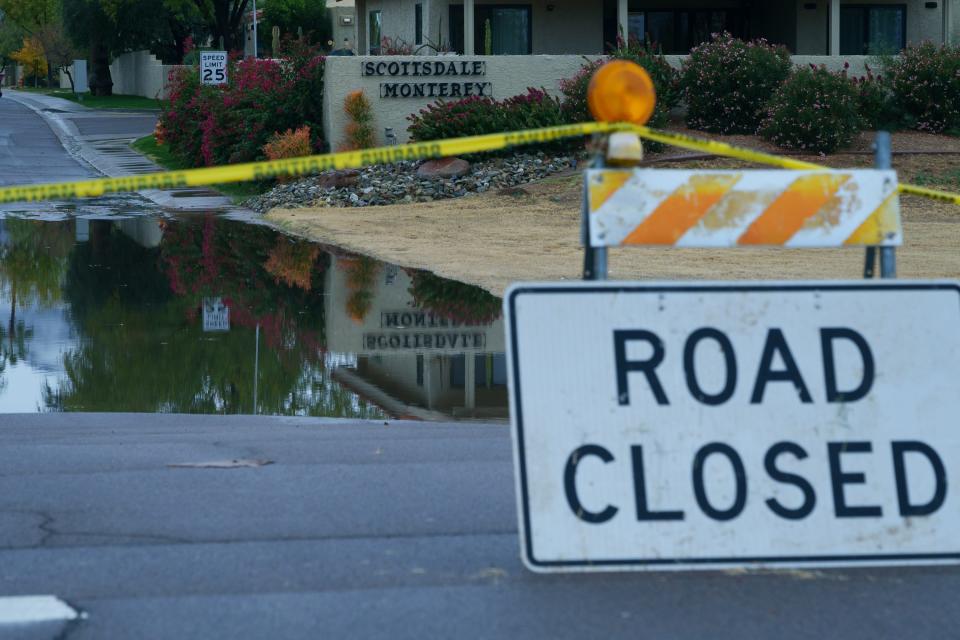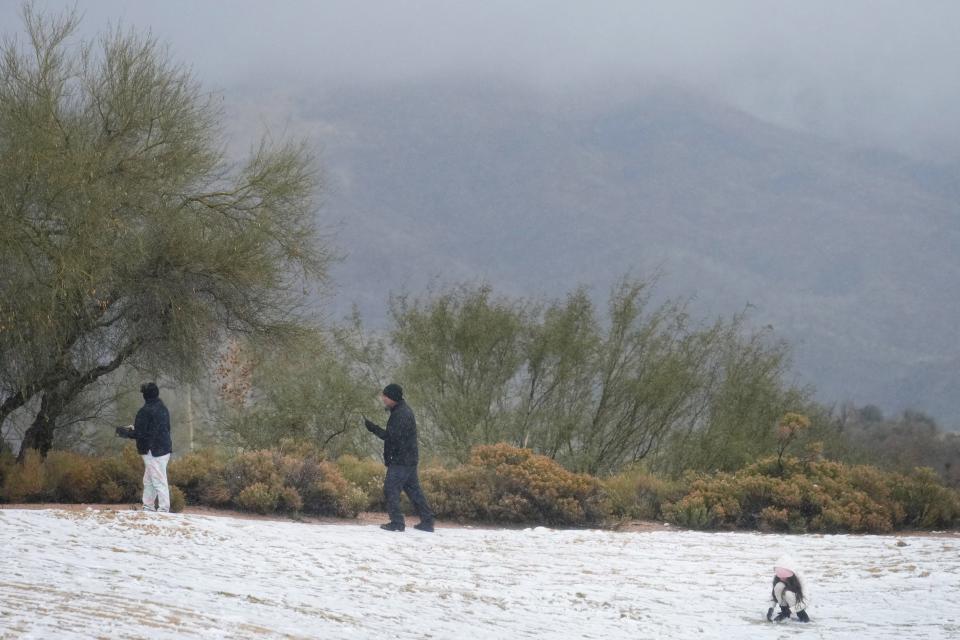Why your tire pressure light comes on and other things to know about cold-weather driving
Arizona, like much of the country, is experiencing a cold snap, unusually low temperatures that affect not only people, but their vehicles as well. And in Phoenix, where cold weather is less common, there are some basics everyone who drives should know.
For motorists without the luxury of an automatic-start vehicle to warm up before getting in, trying to keep bones from aching and joints from stiffening (the human joints) often proves difficult. The colder it is outside, the longer it takes for the heater to warm up the inside.
The same can't be said for the engine. Most vehicles made post-1980 do not need to idle to warm up the engine before driving and, in fact, doing so may actually harm it instead.
A common myth about vehicles in the winter is that the engine must be warmed up before driving. The Utah Department of Environmental Quality says this is not true.
“Excessive idling can actually damage your engine components, including cylinders, spark plugs, and exhaust systems,” the Utah DEQ said in a post debunking some myths. "Many components of the vehicle — including the wheel bearings, tires and suspension system — will warm up only when the vehicle is moving. You need to idle no more than 30 seconds to get the oil circulating through the engine."
Instead of idling, experts advise warming the engine by driving it. Not only will that warm the vehicle faster, but it is also better and more efficient. A gas- and diesel-powered engine running but not moving wastes fuel and lowers the average mileage per gallon.

What about electric cars?
For drivers with electric vehicles, that doesn't apply. According to a NAPA Auto Parts blog, letting the vehicle idle and warm up can have plenty of benefits.
“EVs have to draw on electricity to warm the interior. If you enter a car with a cold cabin and begin driving, the vehicle will need to take from its stored electricity to bring the inside air to a pleasant temperature,” NAPA’s blog post staid. “This will tax the EV’s battery and leave you with less driving range.”
The NAPA experts also suggest warming up the electric vehicle before unplugging it, because doing that can help conserve the battery range, giving more drive time and distance. Unlike a gas car with heat coming from the engine, an EV has to use energy from its battery to supply heat to the cabin, as well as controlling its own temperature, both of which reduce the driving range.
How the cold affects tire pressure
Whether you have a gas- or diesel-powered vehicle, or an electric vehicle, there is one aspect cold weather affects equally: tire pressure.
Low temperatures make the air denser, resulting in a drop in tire pressure, which is why you may see the low-tire-pressure light on your dashboard in the morning. Follow your owner's manual to fill the tire to the proper PSI.

This change in temperature and pressure also causes the tires to become more rigid and lose their flexibility, meaning less grip and traction.
And you may have noticed more cracks in the treads and sidewalls in the winter. This is because the low air pressure expedites wear and tear, enhancing any present tire damage.
“The molecules in your tires, they change how they react between cold and hot,” according to Sun Devil Auto in downtown Phoenix. “Checking tire pressure and condition frequently helps make sure you can travel safely.”
Be careful on icy roads
If travel plans take you to Arizona’s north to brave the cold and snow (or just to experience it), there are a few safety things to note first.
Planning a travel route in advance and having an alternate course just in case could prove to be helpful. Arizona’s Department of Transportation (ADOT) recommends notifying someone of these different routes, as well as the destination and the estimated time of arrival in the event that information is needed to locate you or your vehicle.
Keeping the fuel tank at least three-quarters full could save your life. Running out of gas can be lethal, especially in remote areas. If gas stations are few and far between on the journey, consider bringing a gas can along to fill as well.
Extreme cold weather also makes driving a daunting task. Make sure to have the proper tires for snow and use chains or studded tires when needed. From Oct. 1 to May 1, studded tires are permitted on Arizona highways.
Verify that the radiator has antifreeze rated for freezing temperatures. It's also a good idea to install new windshield wiper blades and fluid that can handle the cold weather as well.
Always keep emergency winter supplies in your vehicle
Drinking water
Winter coats and warm blankets
A fully charged cell phone
Prescribed medications and pain relievers
A first-aid kit
A travel tool kit
Battery cables
A flashlight with extra batteries
An ice scraper
A small bag of sand (or kitty litter) for wheel traction
A small folding shovel for snow removal
And just as a rule, ADOT says, never pass a snowplow. The general guideline is to stay at least four car lengths behind equipment. Plowed snow creates an almost fog-like cloud that diminishes the distance drivers can see. Salt and sand are also thrown out by plows, which can damage a vehicle.
For updated road and weather conditions, visit Arizona Traveler Information, download the AZ 511 app or dial 511.
Caralin Nunes writes about weather and related topics for The Arizona Republic and azcentral. Email her with story tips at caralin.nunes@arizonarepublic.com
You can support environmental journalism in Arizona by subscribing to azcentral today.
This article originally appeared on Arizona Republic: Prepare you and your vehicle for driving in the winter

